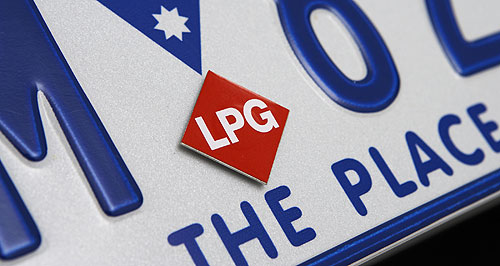Make / Model Search
News - General News - FuelsVictorian government mulls LPG schemeOpportunity knocks: The VACC and LPG industry believe large-scale new-vehicle LPG conversion centres would create ‘long-term sustainable jobs’ at a time when the car manufacturing industry is pulling up stumps. VACC, LPG industry wait on government backing for conversion facilities, R&D centre17 Apr 2014 By IAN PORTER THE future of liquefied petroleum gas (LPG) as a transport fuel will become clearer at the end of this month when the Victorian government decides whether to back a bold plan that includes the establishment of three high-volume new-vehicle conversion centres in Victoria and South Australia. The plan was presented to the Victorian department of state development, business and innovation last week at a meeting with the Victorian Automobile Chamber of Commerce (VACC) and Gas Energy Australia (GEA), who have proposed that the LPG conversion centres be created to help displaced car manufacturing workers. The proposal also includes establishment of an LPG centre of excellence to conduct research and development, to establish quality standards for the conversion industry and to handle the accreditation of participants in the industry. While the project is still only a proposal, it is anticipated that funding may come from the $100 million transition fund proposed by the federal government or from innovation and investment funds created for use in Geelong and Broadmeadows. The proposal has yet to be presented to the South Australian government, which has set aside $60 million to help affected GM Holden workers in that state. The VACC and GEA are expecting a decision before the end of the month. If the Victorian government gives the green light, the first step would be the formation of a steering committee to flesh out the detail of the plan. The large-scale centres – initially converting a total of around 15,000 vehicles a year – would be similar to operations in Europe, where new cars are converted to LPG before they hit the road. The target market would be operators of big fleets that cover significant distances each year and which would see large savings in fuel costs thanks to the lower excise rate levied on LPG. If the scheme went ahead, the established LPG conversion businesses would still be able to convert vehicles and would also act as the aftermarket service network for the new vehicles converted in centres. “Come 2017, traditional car manufacture in Australia will be dead and buried,” said GEA chief executive Mike Carmody. “The Victorian and South Australian industries need to know what assistance they can depend on.” Mr Carmody told GoAuto the idea was to create conversion centres large enough to provide a service that would achieve economies of scale and standards of quality akin to a car manufacturer. The economies of scale would help reduce costs and the quality standards would allow car-makers to maintain their warranty coverage of the converted vehicles. Mr Carmody said the centres would be similar to the high-volume sites operated in Europe by companies including the Italy-based Landi Renzo. Similar conversion sites operate in the US. He said the proposal would also assist the Victorian government as it looked to create jobs and to transition skills and infrastructure from the departing car-makers into other areas. “It seems to be a workable solution and one that is tried and true in Europe and the US,” he said. It is also timely because the federal government’s LPG conversion rebates will cease at June 30 this year, ending the $1000 rebate for converting a used vehicle or $2000 rebate for buying a new vehicle fitted with an LPG system. “The LPG vehicle conversion and manufacturing industry has got to look at a step-change strategy,” Mr Carmody said. “With the new federal government and its broad doctrine of ‘industry heal thyself’, I think it was very appropriate that the industry had a good hard look at itself … and started to develop quite an innovative concept for Australia.” Mr Carmody recognised the recent weak demand for conversions and said the industry needed to get back into the market with a value proposition that was competitive. “Obviously, our primary market is in the fleet area, the high-mileage area. They are the guys who were traditionally attracted to alternative fuels, particularly LPG,” he said. “We have to get back out in that market and be capable of putting a product in the market that they will respond to, and that is a new vehicle with the highest grade of technology, expertly fitted in an accredited facility that carries a new-vehicle warranty.” Mr Carmody said the next step was to conduct a detailed research study of the fleet market. “The main points are that fleets are looking for low cost of ownership. They are looking for the right-sized vehicle to suit their needs and which provides the economy that works on their balance sheet. “We have got to be capable of looking at the type of vehicle, looking at the technology that we will need to convert that vehicle, look at satisfying the OEMs’ warranty and accreditation requirements and have the capacity, based on that demand, to get those vehicles into the market.” Mr Carmody added that most of the work in terms of LPG conversion compatibility is usually done overseas, before the vehicle arrives in Australia. “There’s no need to reinvent the wheel,” he said. “Pick just about any new vehicle on the road and you can bet your life that that particular brand will have an LPG variant overseas. “We know that these accredited facilities work overseas, that they get the economies of scale to bring prices down and we know that there is an international market for these vehicles.” When the LPG proposal was first revealed in January in a submission to the federal government, VACC executive director David Purchase said the plan was to build conversion centres in Melbourne, Geelong and Adelaide, while the LPG centre of excellence would also be located in Melbourne. He said the scheme would preserve skills in Australia and also make use of the country’s abundant supply of gas. “The plan presents an immediate opportunity for the federal government to invest in a niche industry that will be driven by innovation and create new manufacturing jobs,” he said. “Australia has an abundant supply of LPG, national infrastructure, leading edge technology and skilled labour, and now is the time to use that advantage to create long-term sustainable jobs.” The $100 million automotive assistance fund was proposed after Holden announced late last year that it was joining Ford in pulling out of Australian manufacturing. It has not been increased after Toyota announced in February that it, too, was closing down its factories, and recent media reports have suggested that only $72 million has been raised – $60m from federal funds and $12 million from the Victorian government.  Read more |
Click to shareGeneral News articlesResearch General News Motor industry news |










Facebook Twitter Instagram